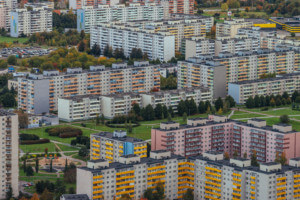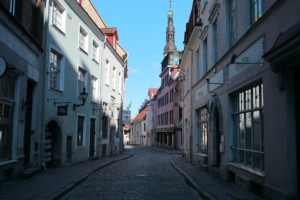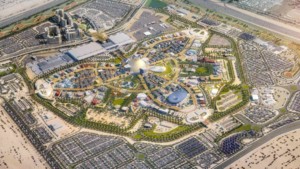As part of the city’s unofficial bid to become the European Green Capital of 2018, Tallinn, the capital of Estonia, is re-imagining its layout in the Tallinn Architecture Biennale.
Home to nearly half a million people, the eastern European city asked architects and planners to imagine how the implementation of driverless cars could change public space among the cityscape as it strives to become a more people-friendly urban space.
The focal point of the competition was the Viru intersection, located in the city center. According to Euronews, the intersection has been “remodeled, destroyed and rebuilt several times over the past century.”
A firm believer in sustainability, architect and urban planner Marten Kaevats spoke to Euronews about his thoughts on driverless cars and the city. “Self-driving cars means something like 10 times less cars in cities, which is quite radical, no congestion. When self-driving mobility comes, this means if there are 10 times less cars and cars use the same space a lot more efficiently than cars do now, what do we do with the (remaining) space? Because there will be too much of it. And now architects and landscape architects need to start being creative and have a new tool set.”
Kaevats is the main curator of this third edition of the Tallinn Architecture Biennale.
The winners of the competition were Enhanced Urban Movement, formed by Clement Lobbens and Frederique Barchelard. Otto Alver, the competition’s curator said, “They are solving all of the problems we have concerning buildings around this area, dealing with cars, dealing with people on the square itself. They are actually bringing something new to Tallinn.”
In its statement, Enhanced Urban Movement’ said:
“Our aim is not to reduce the number of cars or to predict the future of driverless cars but to promote a very strong public space compatible with several mobility systems. Relying on the existing values, the project is based on three strategic points:
– To define a clear outline and a unique design solution for the ground that would absorb the present facilities, comply with a new landscape, and also reflect a symbolic value as a public space of identity;
– To divide the square into clearly identified but strongly interrelated public space sequences emphasizing and articulating its present character and qualities;
– To contour and define the new building spaces in relation to Viru Square. The new constructions outline the public space and readdress the existing buildings and spaces on the main square.”
The Tallinn Architecture Biennale runs until October 11.










